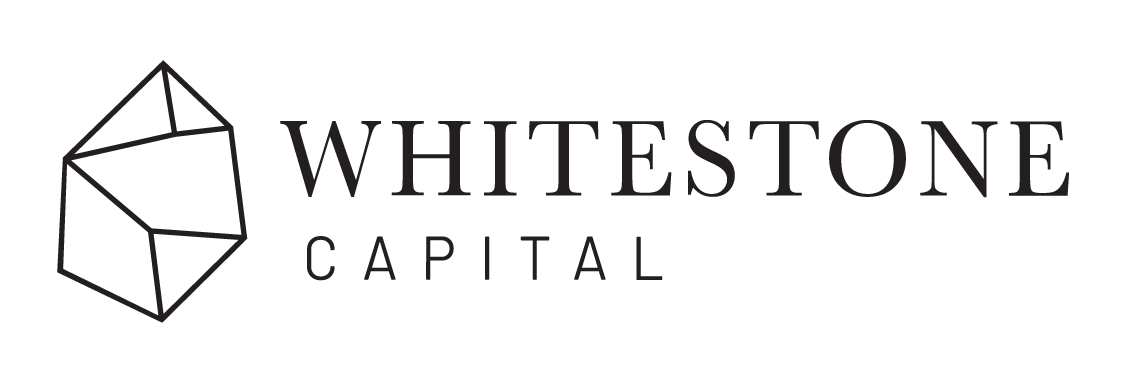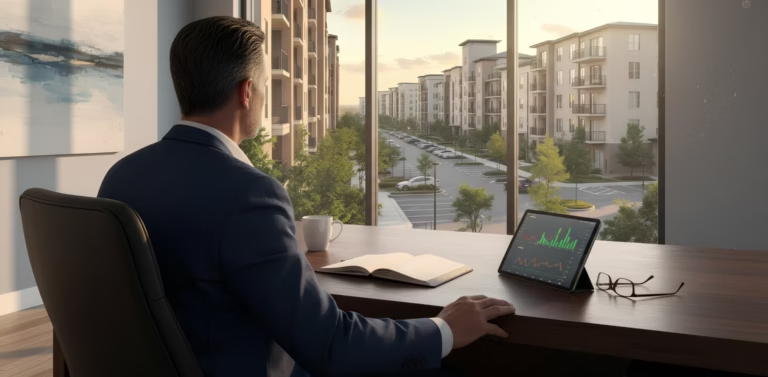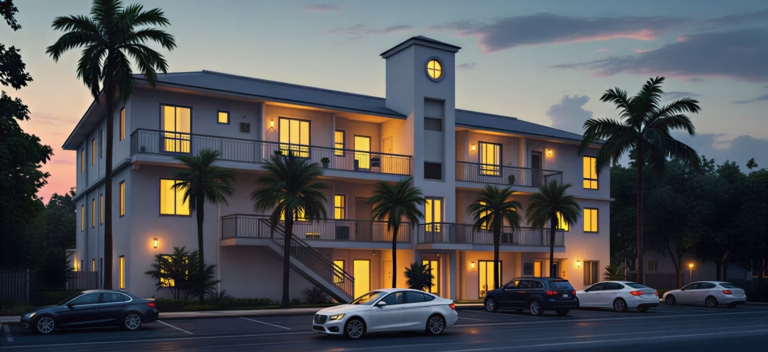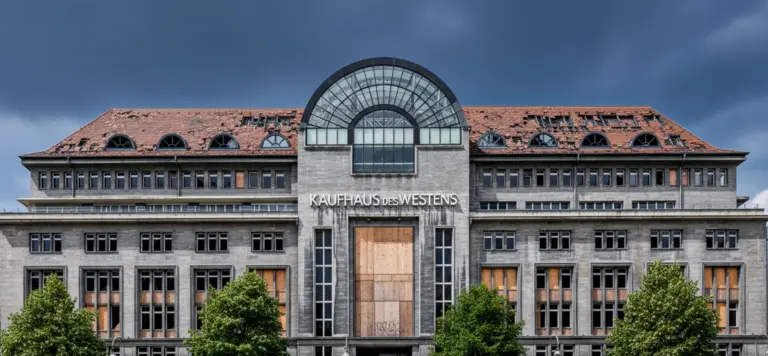The political stage was big, the buzzwords even bigger: “growth”, “America First”, “100% depreciation”. But what does the “One Big Beautiful Bill Act” signed on the symbolic Independence Day, July 4, 2025, really mean for international real estate investors?
We have analyzed the law in detail – with a clear focus on structured investments in US multifamily projects. Our focus is on depreciation, tax planning and structuring.
1. Bonus Depreciation: Maximize Your Depreciation

The “One Big Beautiful Bill Act” allows 100% bonus depreciation. This allows investors to depreciate the entire acquisition cost of “qualified assets” in the year they are put into service – even for used properties.
“Qualified” are movable or separately identifiable components with a useful life of 20 years or less. These include, for example, kitchen fixtures, flooring, technical equipment, outdoor facilities or lighting systems – but not load-bearing components such as walls, roofs or elevators.
These components are regularly the subject of modernizations, especially in existing properties – for example, as part of value-add strategies. These no longer have to be capitalized and depreciated over many years. The ability to immediately claim such investments for tax purposes creates planning security, improves liquidity and increases the return on equity.
This is made possible by a cost segregation analysis, in which the purchase price of a property is divided into short-lived components. These can then be written off immediately in the year of acquisition or manufacture.
Example:
- Purchase of a multifamily asset for $20 million
- Cost segregation identifies 25% ($5 million) as short-lived assets
- At a tax rate of 25%, this results in a tax saving of $1.25 million in the first year
This not only simplifies renovations – but also enhances financial efficiency.
2. Section 179: a Lever that many Overlook
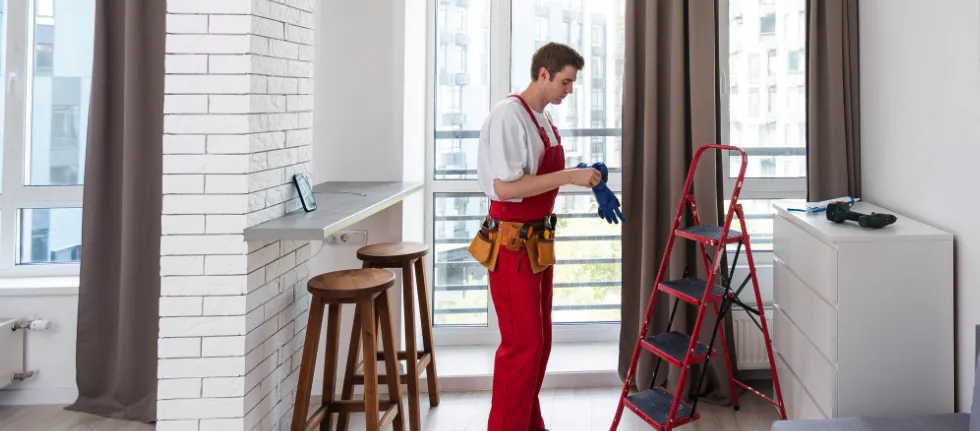
Anyone who invests in existing properties like we do has to modernize – and this is where Section 179 comes in, in addition to bonus depreciation. Section 179 is the lesser-known but extremely effective brother of bonus depreciation – especially for subsequent investments in equipment and technology.
The difference: While bonus depreciation applies automatically, Section 179 must be actively selected – and is limited to certain investments. These include, for example: air conditioning systems, locking systems, lighting, waste compactors, security cameras, communication systems or other building technology that is installed or replaced after purchase.
New in the “Big Beautiful Bill”: The tax-deductible amount is increased from 1.2 to 2.5 million USD per year. The deductible amount is gradually reduced only above a total investment volume of 4 million USD.
This limit is rarely reached, except for very large institutional projects or portfolio transactions with comprehensive technology investment in many properties at the same time.
From 2026, these thresholds will automatically increase with inflation – this ensures planning planning certainty, even if construction costs rise.
Section 179 unfolds its effect especially in value-add strategies: The investments in technology or equipment can be fully depreciated in the year of acquisition – this reduces the tax burden, increases cash flow and improves the return on equity.
Example:
- An investor invests $1 million in new air conditioning systems and security systems.
- At a tax rate of 25%, he immediately saves $250,000 – cash that can be used directly for the next step.
Conclusion: Section 179 is not a substitute for bonus depreciation – but a targeted supplement. Section 179 is not Broad Tax Incentive – but a lever for precise modernization.
3. The Big Beautiful Bill is a Game Changer for Used Properties
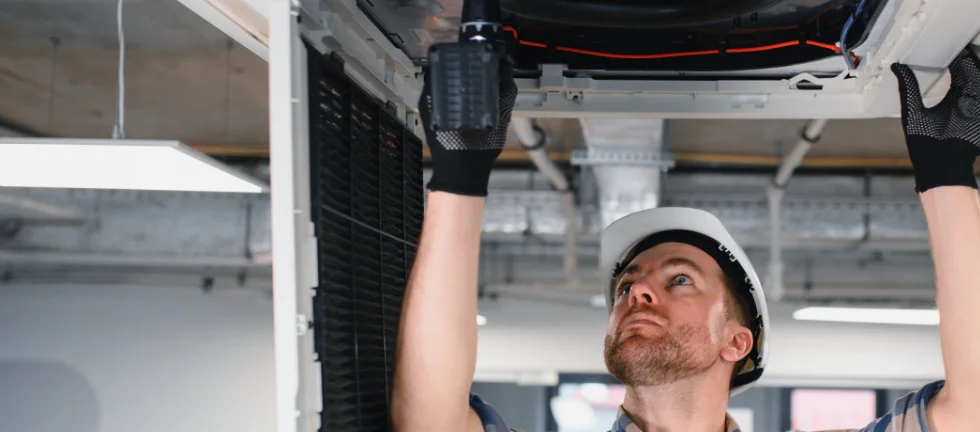
For a long time, the tax advantages of bonus depreciation and Section 179 only applied to new buildings or brand-new equipment. The new law lifts this restriction:
Used properties and used technical equipment can now also fully benefit from these depreciation rules.
For investors like us who buy and modernize existing properties – for example, as part of value-add strategies – this is a real turning point. Because: CapEx measures (i.e. investments in maintenance and improvement, e.g. new facades, technology, outdoor facilities) can now be claimed for tax purposes immediately.
Example: How bonus depreciation and Section 179 work together
Initial situation:
An investor acquires an older apartment building for $10 million.
In addition, he plans investments of $2 million in technology, equipment and modernization.
1. Depreciation of the Purchase Price through Cost Segregation
- A professional cost segregation analysis determines that 25% of the purchase price – i.e. $2.5 million – is attributable to short-lived, qualified assets (e.g. flooring, kitchen fixtures, outdoor facilities).
- Thanks to the 100% bonus depreciation, these $2.5 million can be fully claimed for tax purposes in the year of closing.
- At an effective tax rate of 25%, this results in an immediate tax saving of $625,000.
2. Depreciation of Subsequent Renovation Measures
- The additionally planned $2 million CapEx includes, for example, new HVAC systems, lighting and security technology.
- These expenses can – provided they qualify – be claimed immediately via Section 179 or, if applicable, also via bonus depreciation.
- Example: If $1 million of these investments are approved for Section 179, this results in a further tax saving of $250,000 (at a 25% tax rate).
Result:
The total tax saving in the first year can be up to $875,000 – an effect that significantly increases the return on equity and releases liquidity for reinvestments.
4. QBI Deduction: 20% that Changes a Lot
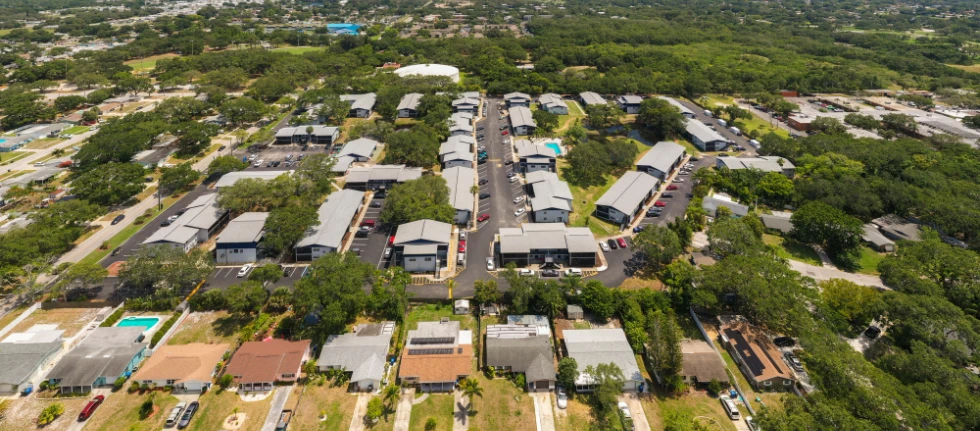
Anyone who actively invests in real estate in the US via a pass-through entity – such as an LLC or partnership – now benefits permanently: Up to 20% of the operating profit can be claimed as a deduction from taxable income when calculating taxes.
Certain income from REIT investments is also included – making fund solutions more attractive from a tax perspective.
Example:
- An investor generates $500,000 in profit from a US real estate LLC.
- The QBI deduction deducts $100,000. $400,000 remains as taxable profit.
- At a tax rate of 25%, this results in a tax burden of $100,000 instead of $125,000 – a saving of $25,000.
5. International Structuring: more Scope, less Friction

International investors who hold US real estate through foreign companies have had to pay particular attention to taxes since 2017: The tax reform at the time (TCJA) had expanded the so-called Controlled Foreign Corporation (CFC) rules – in particular by abolishing the so-called downward attribution barrier.
The result: Even purely foreign companies could suddenly be considered US taxable CFCs – solely through indirect connections to US persons. This has unnecessarily complicated many structures – and made international investments in passive US vehicles more difficult.
The new bill now brings clarity: The old rule is restored – and downward attribution is excluded. This means: A foreign holding structure is no longer automatically considered a CFC just because a US investor is involved somewhere.
For our practice, this means:
- More design freedom in investment structuring
- Fewer reporting obligations
- Less risk of unintended US tax consequences
Above all, however: The US is making it easier for international investors again – without sacrificing transparency or regulation. This balance of openness and order is one of the reasons why we invest there.
6. Permanent Rules. Reliable Decisions.

Many of the new tax advantages – such as bonus depreciation or the QBI deduction – have not only been improved, but permanently anchored. This is not a technical detail. It is the basis for something that has become rare in investing: planning planning certainty.
Unlike in Germany, where tax incentives are often temporary or overloaded with regulations, the US market now allows clear decisions – for investors who focus not on hype, but on cash flow and structure.
7. More than a Gift Bag – Tailwind for our Vision

Tax advantages only take effect if you use them strategically – and are flexible enough to act at the right time. We are not a corporation. No cumbersome corporate structure. We plan strategically – and act when the timing is optimal.
Our approach:
- Cost segregation analyses immediately after closing – in order to fully exploit bonus depreciation.
- Targeted scheduling of commissioning – so that the tax effect takes effect in the optimal year.
- We use Section 179 where technical equipment is part of the value-add strategy.
- We adapt financing structure and liquidity planning to the tax levers – in order to achieve better credit conditions.
- Choice of location not based on gut feeling – but on tax sustainability.
In short: We are fast because we are small. And precise because we know what matters.
Conclusion: Substance instead of speculation
The “One Big Beautiful Bill Act” creates clear, permanently valid framework conditions for tax-optimized real estate investments in the US. New design options are opening up, especially for existing properties – through bonus depreciation, Section 179 and QBI deduction.
For structured investors, this does not create promises, but concrete options for action. Only those who know the rules can use them.
But for us, tax advantages are never a reason for an investment – and subsidies do not make an investment viable. Every investment must pay off even without government gifts.

Yes, the “Big Beautiful Bill” is a tax gift – regardless of how you feel about current US politics. But one thing is undeniable: this legislation is investor-friendly, well thought out and strategically bold.
Could Germany’s policymakers envision such bold measures to boost housing profitability? To promote investment in German (possibly affordable) housing?
This confirms once again that our choice to be active in the US is rewarded once again.
Sources and further literature:
